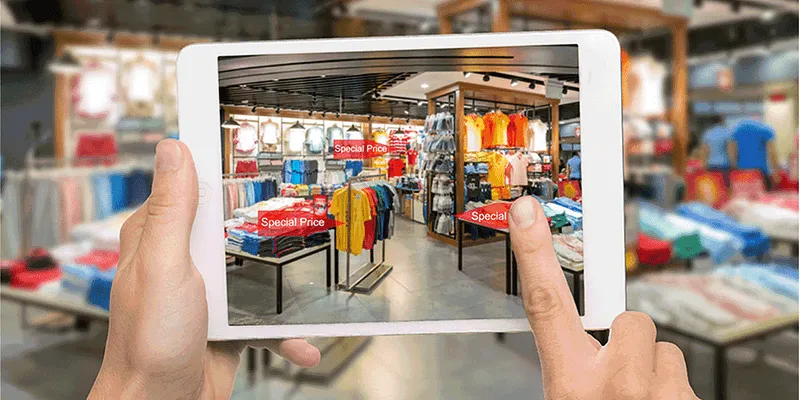Today’s Indian consumer is demanding, tech-savvy, and expects a seamless shopping experience across all channels. To meet these expectations, retailers must rethink their approach to technology. Composable commerce, headless architecture, and microservices offer a solution that prioritises flexibility, agility, and the ability to deliver personalised experiences at scale.
In essence, composability is a strategic approach that empowers businesses to adapt, innovate, and thrive in ever-changing market dynamics. By leveraging the power of headless technologies and microservices, retailers can create a flexible and agile architecture that enables them to deliver exceptional customer experiences, optimise operations, and stay ahead of the competition.
However, the path to composability doesn’t have to be daunting. Enter pragmatic composability—a measured and effective approach that allows retailers to gradually integrate the benefits of composability into their existing systems without the need for a complete platform overhaul.
Understanding building blocks of composability
As businesses look to break free from the constraints of monolithic architectures, the search for a more adaptable and scalable solution has intensified. The limitations of relying on a single, inflexible system that proves costly to upgrade and extend have become increasingly apparent.
Composability offers a compelling alternative, enabling organisations to construct their ideal architecture by combining various software solutions. This modular approach allows businesses to tailor their technology stack to meet current and future needs, ensuring they can respond quickly to changing market demands.

Power of composability for Indian retailers
In today’s fast-paced digital landscape, Indian retailers must remain nimble and responsive to stay relevant. Composability equips businesses with the tools to adapt, grow, and succeed in the face of change.
- Simplified maintenance and updates
Maintaining and upgrading monolithic legacy systems often places a significant burden on IT teams. Composable architectures, built on cloud-native technologies, offer automatic updates, reducing the need for manual interventions. Adopting microservices and headless technologies streamlines the integration of new components, enabling seamless enhancements and improvements.
- Flexibility to experiment and innovate
Composability encourages retailers to adopt a “build less, test more” mindset. New features and capabilities can be quickly implemented and rolled back if the desired outcomes are not achieved. This flexibility minimises vendor lock-in and reduces overall architecture and business operations risks.
The ability to experiment and iterate rapidly is crucial in today’s competitive landscape. The rise of generative AI serves as a prime example: since the launch of ChatGPT by OpenAI in November 2022, numerous companies have incorporated AI-powered chatbots, personalisation, and other innovative features to gain a competitive edge.
In the fast-paced world of commerce, businesses must respond swiftly to evolving customer preferences and tackle supply chain disruptions. Composability empowers organisations to address market dynamics in real-time, enabling them to capitalise on opportunities and mitigate challenges promptly.
Leading Indian companies, such as Tata CLiQ, Nykaa, and Flipkart have already embraced composable approaches, witnessing conversion rates, geographic expansion, and customer service improvements.
Pragmatic path to composability
While the benefits of composability are evident, the prospect of a complete system overhaul may seem daunting. However, pragmatic composability offers a measured approach that allows businesses to integrate the benefits of composability into their existing architecture through a gradual migration process.
One such case in point is Pashmina.com, renowned for its exquisite Kashmiri pashminas, which embarked on a transformative journey by migrating to a composable commerce platform. Previously on Adobe Commerce, Pashmina.com sought enhanced scalability and flexibility to support its global customer base to uphold Kashmiri craftsmanship.
An implementation of cloud-native architecture unlocked the brand’s ability to optimise operations and expand its global reach without the complexity of managing infrastructure. This partnership not only enhanced digital storefronts but also empowered Pashmina.com to introduce multilingual support in localised currency options, essential for seamless global transactions.
As we can see from the above example, retailers can minimise disruptions and maximise time-to-value by focusing on solutions designed to integrate seamlessly with current systems. This pragmatic approach avoids the pitfalls of a complete platform migration while harnessing the power of new technologies.
When selecting technologies, retailers must consider their current setup and the short-term value they aim to achieve. Businesses should opt for technologies that can add immediate value rather than getting swayed by promises of solutions that may not align with their existing configuration.
Composability extends beyond a mere technology approach; it represents a fundamental shift in mindset. Pragmatic composability fosters collaboration between IT and business teams, empowering the entire organisation to deliver customer-centric solutions.
Indian retailers need not embark on a costly and time-consuming system overhaul to embrace the composable future. By adopting a pragmatic approach to composability, businesses can position themselves for sustainable growth and continuous evolution in the ever-changing retail landscape.
(Prakash Gurumoorthy is the General Manager of VTEX Europe and APAC.)
(Disclaimer: The views and opinions expressed in this article are those of the author and do not necessarily reflect the views of YourStory.)


![Read more about the article [The Turning Point] How and why Koo is making a buzz with 10X user growth](https://blog.digitalsevaa.com/wp-content/uploads/2021/02/Imagey3kj-1597321050448-1613134386440-300x150.jpg)

![Read more about the article [Funding alert] Darwinbox turns unicorn; raises $72M in Series D round led by Technology Crossover Ventures](https://blog.digitalsevaa.com/wp-content/uploads/2022/01/Image42iw-1643037235793-300x150.jpg)





